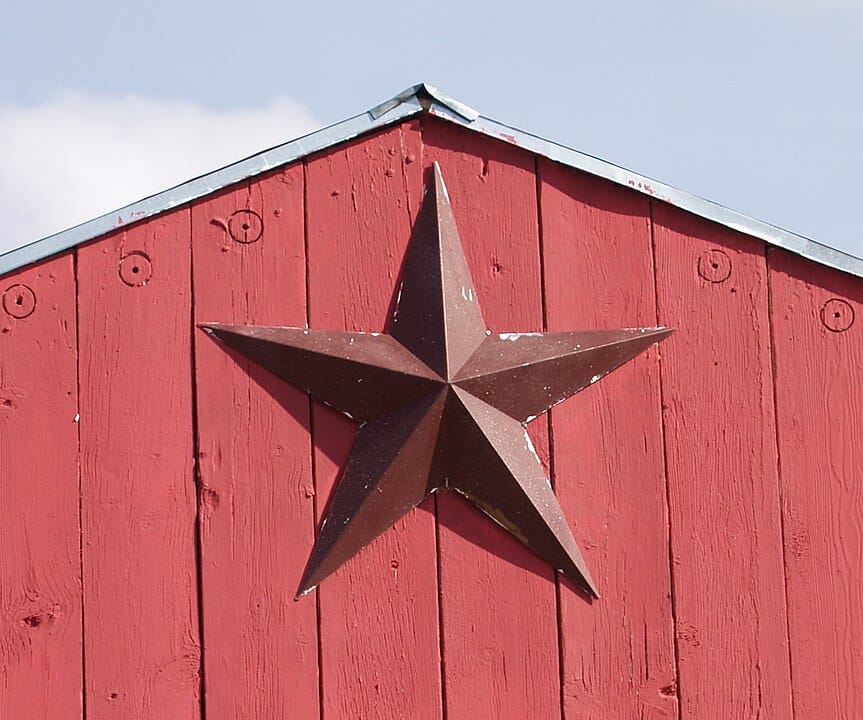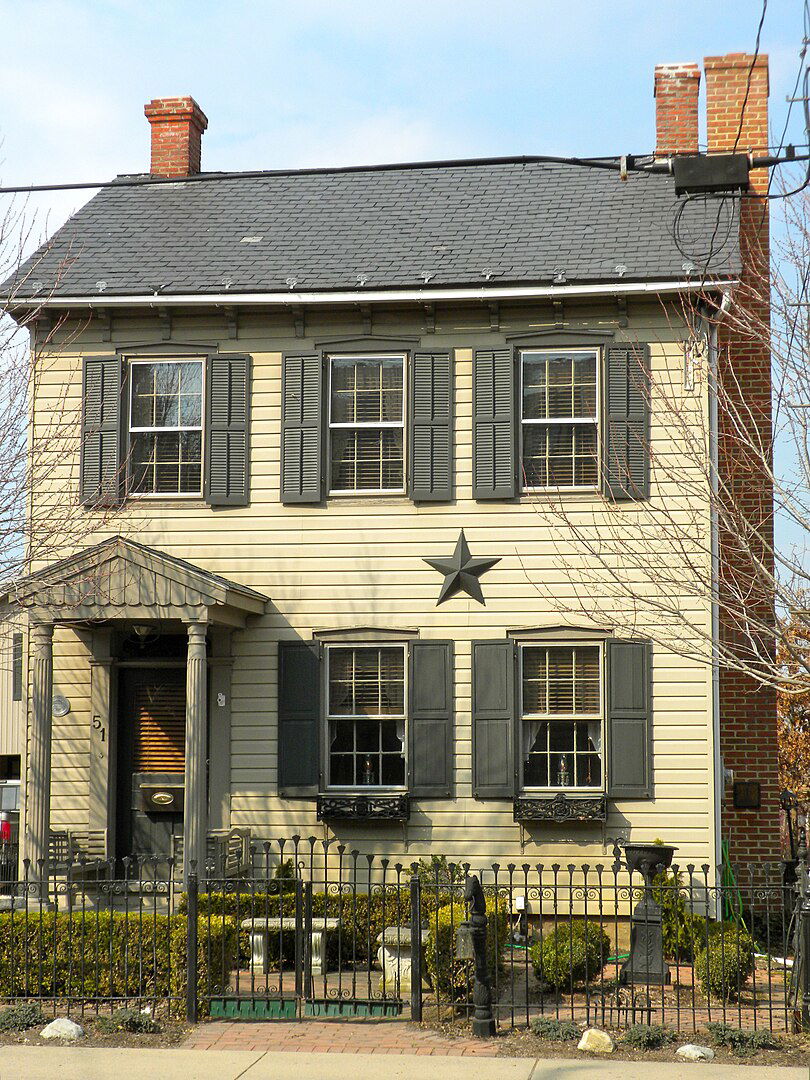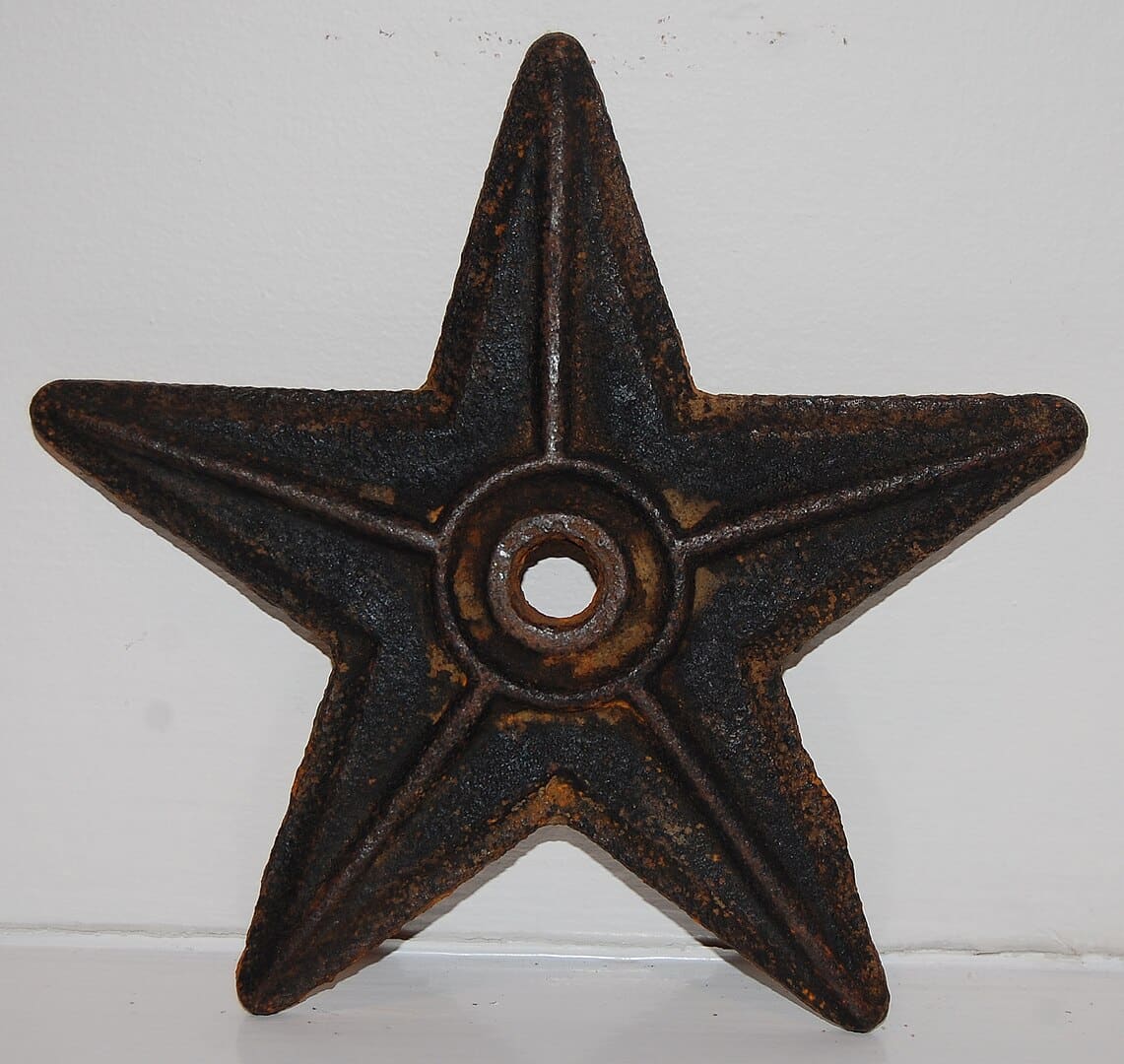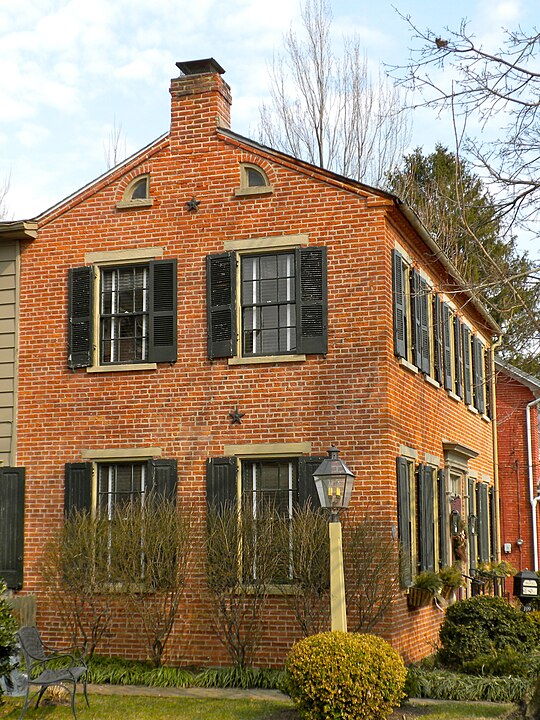Barn stars, also known as barnstars, primitive stars, or Pennsylvania stars, are a decorative emblem often seen on barns in south-central and southeastern Pennsylvania. These stars are typically geometric in design, featuring five, six, eight, or twelve points, and sometimes adopting a circular “wagon wheel” style.

The story of barn stars in North America dates back approximately 300 years. Religious refugees from Germany’s Rhine region, including Amish, Mennonites, and Lutherans, migrated to southeastern Pennsylvania seeking religious freedom. These settlers, collectively known as the Pennsylvania Dutch, brought with them a tradition of painting vivid geometric patterns on barns. These designs, including flowers, birds, and stars, carried symbolic meanings alongside their aesthetic appeal.
Barn stars first appeared in the 1830s, but their popularity soared during the Civil War era, particularly in Pennsylvania, and remained widespread into the 1870s.

Over time, the materials used for barn stars have evolved. Initially, they were painted directly onto the barn’s surface. Later, they were crafted as separate pieces made of wood and attached to barns.
Modern metal barn stars, often made from tin, steel, or iron, offer a rustic and durable appeal, while wooden versions, typically hand-cut and painted, reflect a more traditional, handcrafted style.

Contrary to popular belief, barn stars rarely served a structural purpose. Historically, they symbolized good luck for farmers, much like a horseshoe over a doorway. Some believe Pennsylvania Dutch farmers used barn stars to ward off evil spirits or attract good fortune, although this urban legend is partly a myth.
Experts highlight barn stars’ close ties to agricultural life, with their origins as a carpenter’s signature on barns. Early barn stars were smaller and often marked with the year of the barn’s construction.
The colors of barn stars also carry specific meanings:
- Black: Protection and unity.
- Blue: Peace, spirituality, and calm.
- Brown: Earth, friendship, and strength.
- Green: Growth and fertility.
- Orange: Career abundance and motivation.
- Red: Passion, creativity, and charisma.
- Violet: Sacredness.
- White: Purity and free energy flow.
- Yellow: Health, love, and divine connection.

While similar, barn stars and hex signs are distinct. Hex signs, a form of Pennsylvania Dutch folk art, are circular symbols with intricate geometric patterns and vibrant colors. They were traditionally believed to ward off evil or bring good luck and are tied to mystical traditions.
Barn stars, in contrast, are simpler geometric designs, often five-pointed, and are primarily decorative. Though also associated with good luck, they lack the spiritual significance of hex signs.
The term “barn star” has also been used to describe star-shaped anchor plates on old buildings from the 18th and 19th centuries. These cast-iron stars were not just decorative but served a structural purpose. They acted as washers for tie rods, reinforcing masonry walls and preventing structural damage, helping preserve historic buildings.
